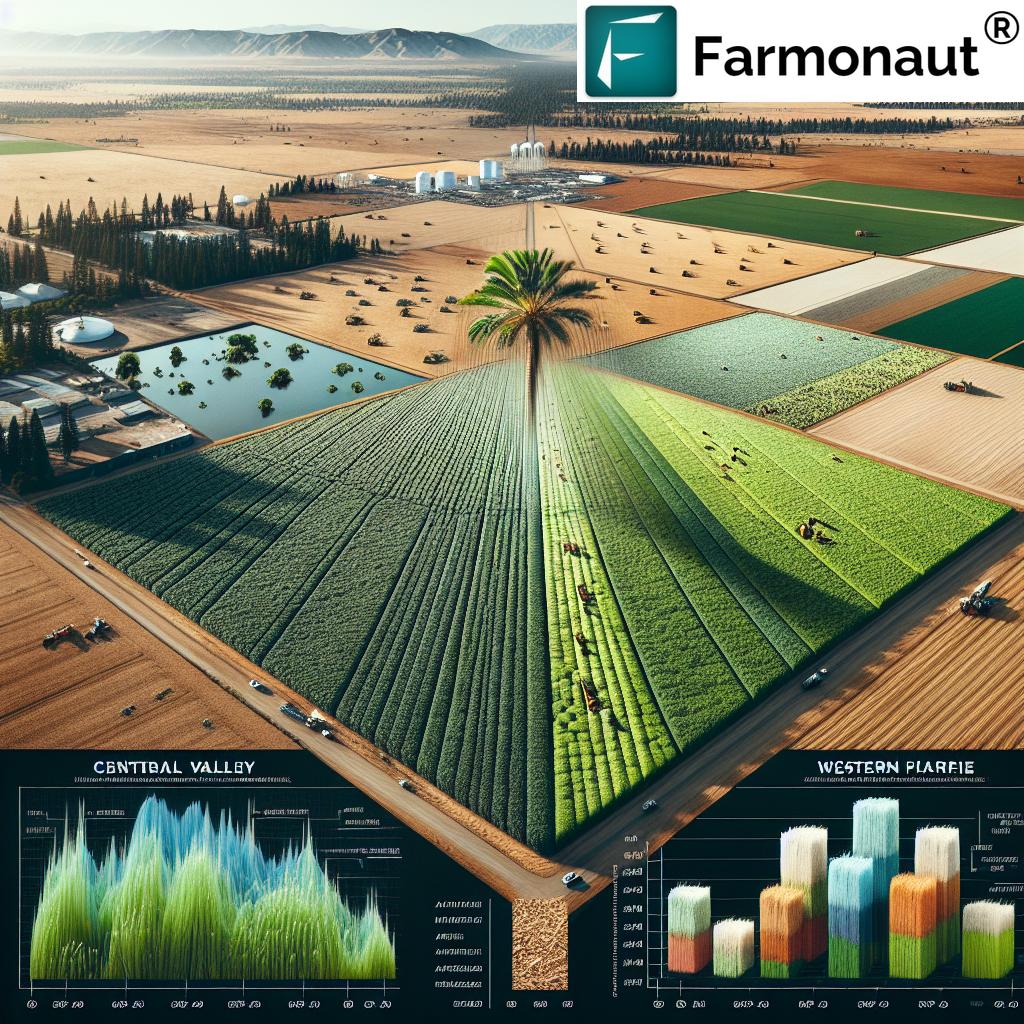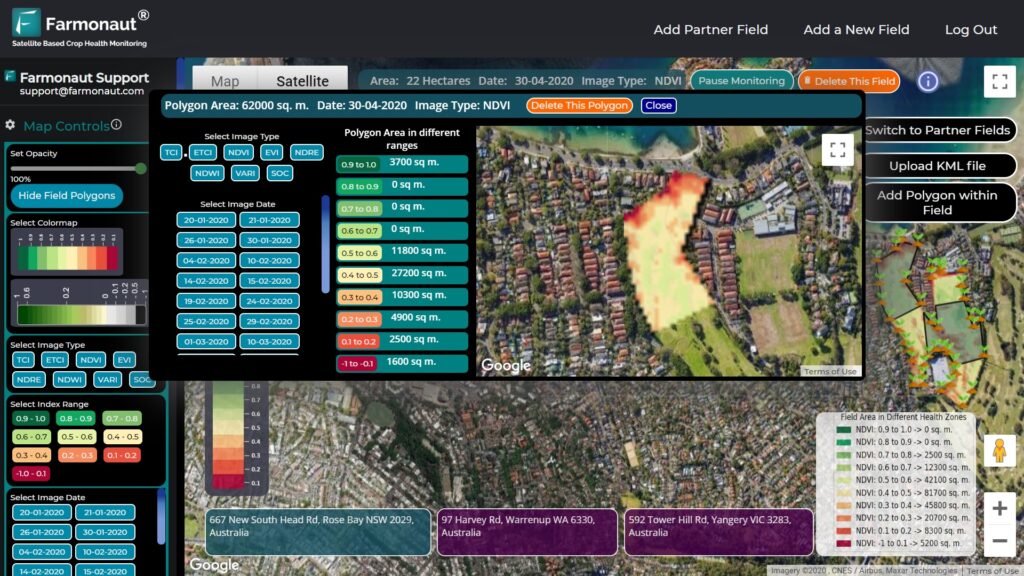California Alfalfa Market: Planting Trends, Price Challenges, and Water Concerns Impacting Western Hay Production
“California alfalfa seed sales have decreased, indicating a potential reduction in planted acreage across Western states.”
Welcome to our comprehensive analysis of the California alfalfa market and its far-reaching implications for Western hay production. In this blog post, we’ll delve into the complex interplay of factors shaping the alfalfa industry, from planting trends and price challenges to water concerns and their impact on forage production. As we navigate through these issues, we’ll explore how growers are adapting to changing market conditions and what these shifts mean for the future of hay and silage quality in the region.
The Shifting Landscape of Alfalfa Hay Market Trends
The alfalfa hay market in the Western United States is experiencing significant transformations that are reshaping the industry. These changes are not just isolated incidents but part of a larger pattern that demands our attention. Let’s break down the key components of this evolving landscape:
- Decreased seed sales in California
- Falling prices for Fair and Good quality alfalfa hay
- Water scarcity and drought conditions
- Changing dynamics in forage production
As we examine these factors, it’s crucial to understand how they interconnect and influence each other, creating a complex web of challenges for growers, dairy farmers, and the livestock industry as a whole.
California Alfalfa Planting: A Closer Look at the Trends
California has long been a powerhouse in alfalfa production, but recent trends suggest a shift in this paradigm. The decrease in alfalfa seed sales is a telling indicator of potential reductions in planted acreage. This trend isn’t confined to California alone; it’s reverberating across Western states, signaling a broader change in agricultural practices and market dynamics.
Several factors contribute to this decline:
- Economic pressures forcing growers to consider alternative crops
- Water scarcity driving decisions on water-intensive crops like alfalfa
- Market saturation and price volatility
- Changing dietary trends in livestock industries
To better understand these trends, let’s look at some data on California’s alfalfa market over the past few years:
| Year | Planted Acreage (acres) | Average Price (Fair Quality) ($/ton) | Average Price (Good Quality) ($/ton) | Water Availability Index (1-10) |
|---|---|---|---|---|
| 2020 | 720,000 | $180 | $205 | 5 |
| 2021 | 700,000 | $175 | $200 | 4 |
| 2022 | 680,000 | $170 | $195 | 3 |
| 2023 | 660,000 | $165 | $190 | 2 |
This table illustrates the gradual decline in planted acreage and prices, coupled with increasing water scarcity. It’s clear that the California alfalfa market is facing significant challenges that require innovative solutions and adaptive strategies.
The Price Conundrum: Navigating Falling Hay Prices
“Falling prices for Fair and Good quality alfalfa hay are forcing growers to make difficult decisions about crop management.”
One of the most pressing issues facing alfalfa growers in California and the Western U.S. is the downward trend in hay prices. This decline is particularly pronounced for Fair and Good quality alfalfa hay, which form the backbone of many livestock feed programs. The price challenges are multifaceted and stem from various factors:
- Oversupply in certain regions
- Competition from alternative feed sources
- Changing demand patterns in the dairy and livestock industries
- Economic pressures on farms leading to reduced purchasing power
These falling prices are forcing growers to reevaluate their crop management strategies. Many are faced with difficult decisions:
- Should they continue to produce alfalfa at lower profit margins?
- Is it time to transition to other crops with potentially higher returns?
- How can they optimize their operations to remain competitive in a challenging market?
The answers to these questions are not straightforward and often depend on individual farm circumstances, regional market conditions, and long-term agricultural goals.
Water Woes: Irrigation Challenges in Drought-Affected Regions
Water scarcity is perhaps the most critical factor influencing alfalfa production in California and other Western states. The region has been grappling with persistent drought conditions, which have severe implications for irrigation water management and crop yield optimization. Let’s explore the key aspects of this water crisis:
- Reduced snowpack and rainfall leading to lower reservoir levels
- Increased competition for limited water resources among various sectors
- Rising costs of water for agricultural use
- Stricter regulations on water usage and pumping from underground aquifers
These water challenges are forcing alfalfa growers to adopt more efficient irrigation practices and consider alternative water sources. Some strategies being employed include:
- Implementation of precision irrigation systems
- Adoption of drought-resistant alfalfa varieties
- Exploration of water recycling and reuse technologies
- Strategic fallowing of fields to conserve water
The impact of water scarcity on alfalfa production cannot be overstated. It’s a critical factor driving the potential reduction in alfalfa hay acreage across Western states and is intricately linked to the broader challenges facing the industry.
The Ripple Effect: Implications for Dairy Farm Feed Costs
The changes in alfalfa production and pricing have significant implications for dairy farm feed costs. Alfalfa hay is a crucial component of dairy cow diets, prized for its high protein content and digestibility. As the alfalfa market undergoes these transformations, dairy farmers are feeling the impact:
- Fluctuating feed costs affecting overall farm profitability
- Need for reformulation of feed rations to account for price and availability changes
- Exploration of alternative forage options to supplement or replace alfalfa
- Increased focus on on-farm forage production to reduce reliance on purchased hay
These changes are prompting a reevaluation of feeding strategies across the dairy industry, with potential long-term effects on milk production costs and overall dairy economics.
Adapting to Change: Strategies for Sustainable Forage Production
In the face of these challenges, alfalfa growers and the broader agricultural community are developing innovative strategies to ensure sustainable forage production. These approaches focus on balancing economic viability with environmental stewardship:
- Investment in research for more water-efficient and drought-tolerant alfalfa varieties
- Adoption of precision agriculture techniques for optimal resource utilization
- Integration of cover crops and soil health practices to improve overall farm resilience
- Exploration of value-added alfalfa products, such as high-protein hay for specific markets
- Collaboration with research institutions and extension services for knowledge sharing and innovation
These strategies aim to address the immediate challenges while also building a more sustainable and resilient forage production system for the future.
The Role of Technology in Navigating Market Challenges
In this rapidly evolving agricultural landscape, technology plays a crucial role in helping farmers adapt to market challenges and optimize their operations. Satellite-based farm management solutions, like those offered by Farmonaut, are becoming increasingly important tools for alfalfa growers and other agricultural producers.
Farmonaut’s platform provides valuable services that can help address many of the challenges we’ve discussed:
- Real-time crop health monitoring using satellite imagery
- AI-based advisory systems for informed decision-making
- Resource management tools for optimizing water and input use
- Weather forecasting and climate analysis for better planning
These technologies enable farmers to make data-driven decisions, improving efficiency and potentially mitigating some of the market and environmental challenges they face.

For those interested in integrating satellite and weather data into their own systems, Farmonaut also offers API access:
The Future of Hay and Silage Quality in the Western U.S.
As we look to the future of hay and silage quality in the Western United States, several key trends and factors are likely to shape the industry:
- Continued focus on water-efficient production methods
- Increased emphasis on hay quality over quantity to meet specific market demands
- Growing interest in alternative forages and mixed hay products
- Adoption of advanced harvesting and storage techniques to preserve forage quality
- Greater integration of technology in all aspects of forage production and management
These trends suggest a future where the hay and silage industry in the Western U.S. becomes more diversified, technologically advanced, and adaptable to changing environmental and market conditions.
Conclusion: Navigating the Path Forward
The California alfalfa market and Western hay production industry are at a critical juncture. The challenges of falling prices, water scarcity, and changing market dynamics are significant, but they also present opportunities for innovation and adaptation. As we’ve explored in this blog post, growers, dairy farmers, and other stakeholders are developing new strategies and embracing technologies to navigate these challenges.
The future of alfalfa and hay production in the Western U.S. will likely be characterized by:
- More efficient and sustainable production practices
- Greater integration of data-driven decision-making tools
- Diversification of forage options and value-added products
- Increased collaboration across the agricultural sector to address shared challenges
By staying informed, adaptable, and open to new approaches, those involved in the alfalfa and hay industry can position themselves to thrive in this evolving landscape.
FAQ Section
Q: How is the decrease in California alfalfa seed sales affecting the overall hay market?
A: The decrease in alfalfa seed sales is indicative of a potential reduction in planted acreage, which could lead to tighter supply and potentially higher prices in the future, depending on demand dynamics.
Q: What are the main factors driving the fall in alfalfa hay prices?
A: Key factors include oversupply in certain regions, competition from alternative feed sources, changing demand patterns in the dairy and livestock industries, and economic pressures on farms leading to reduced purchasing power.
Q: How are dairy farmers adapting to changes in alfalfa availability and pricing?
A: Dairy farmers are exploring alternative forage options, reformulating feed rations, increasing on-farm forage production, and in some cases, adjusting herd sizes to manage feed costs.
Q: What role does water scarcity play in the challenges facing alfalfa growers?
A: Water scarcity is a critical factor, leading to increased production costs, reduced yields, and in some cases, decisions to reduce alfalfa acreage in favor of less water-intensive crops.
Q: How can technology help alfalfa growers navigate current market challenges?
A: Technologies like satellite-based crop monitoring, AI-driven advisory systems, and precision agriculture tools can help growers optimize resource use, improve crop health, and make more informed decisions in response to market and environmental challenges.
Additional Resources
For those looking to leverage technology in their agricultural operations, Farmonaut offers mobile applications for both Android and iOS platforms:


These apps provide on-the-go access to crucial farm management tools and data, helping farmers stay informed and make timely decisions.
Farmonaut Subscriptions
As we continue to monitor the evolving situation in the California alfalfa market and Western hay production, it’s clear that adaptability, innovation, and informed decision-making will be key to navigating the challenges ahead. By staying attuned to market trends, embracing sustainable practices, and leveraging technological solutions, stakeholders in the alfalfa and hay industry can work towards a resilient and prosperous future.














